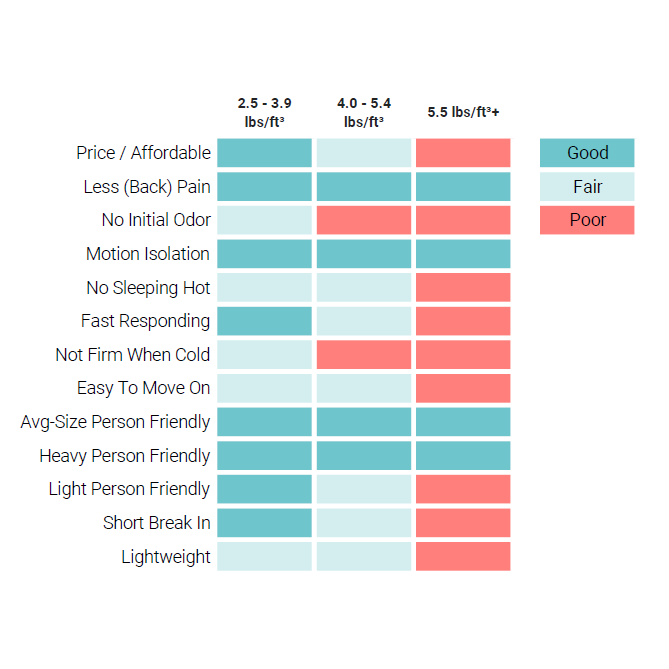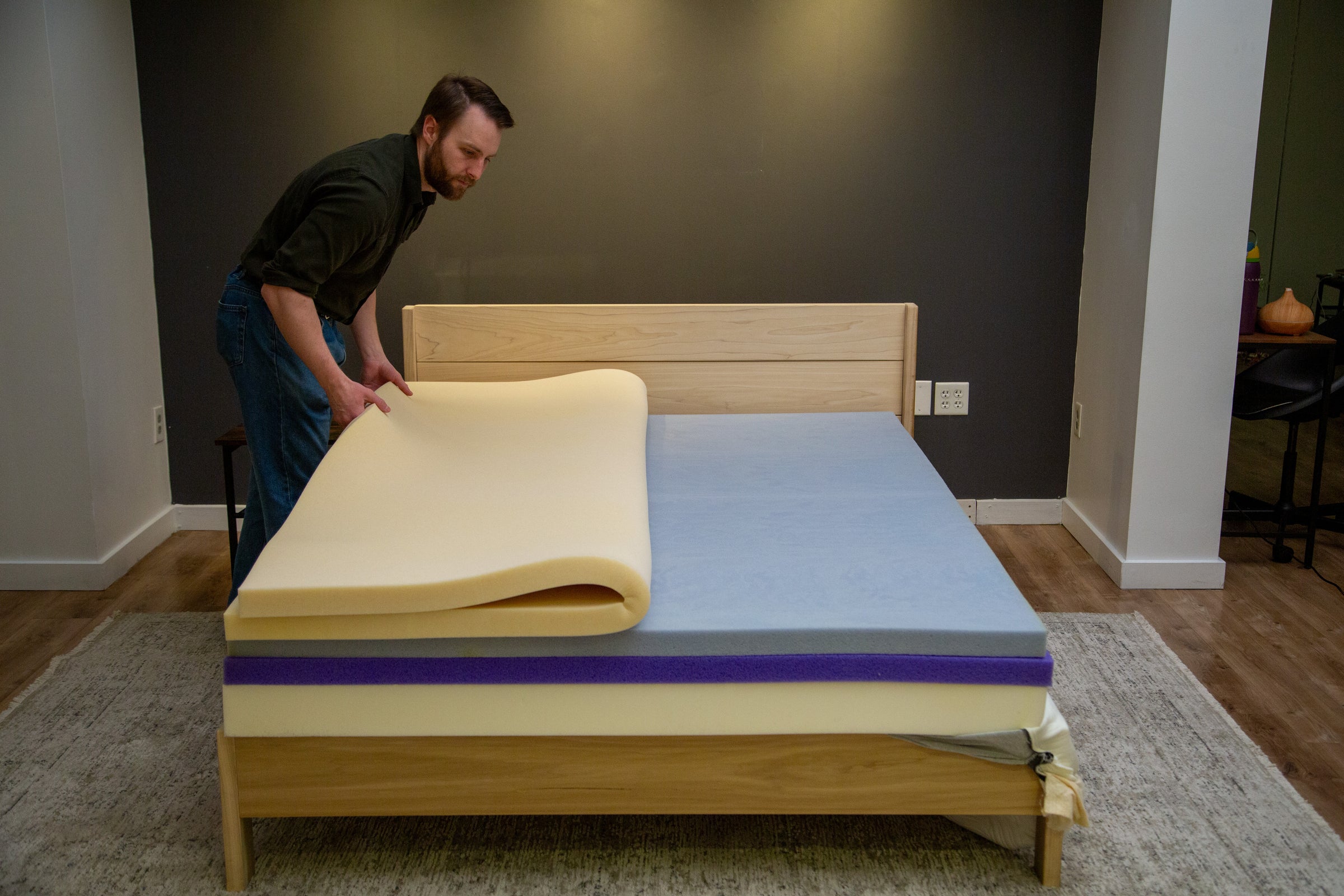The Main Point
The measure of durability in foam revolves around one concept: density. The denser the foam, the more material went into making it, which in turn translates to a longer lasting product.
DENSITY = LBS/FT³
Often times, mattress manufacturers will use quality, high-density foam in the top layer or two of a mattress (the parts you feel), then opt to use low-density, cheap foam in the base-layer of the bed in order to cut costs. Ever seen a foam mattress with a big, body-shaped indent in it? A cheap, low-density base is surely to blame. The foam simply isn’t made to last and will collapse with very little use. Those $200 king-sized mattresses on Amazon? Buyers beware.
To give you an idea of just how much the density of the base-layer or core of a mattress affects its longevity, let’s take a look at some numbers:

That $200, 12-inch mattress you found on Amazon? We have bad news: it probably won’t last. After 80,000 compressions (a standard in our testing cycle), foam with a density of 1.5 lbs/ft loses over 5 times as much height as 2.2 lb foam. In other words, with this density of foam, you’ll likely find a body-shaped indent after a short period of time.

Nearly all bed-in-a-box brands today use a base layer of foam in the 1.6-1.8 lb range. This typically is the bar that is used to qualify a mattress as “decent,” and is often the benchmark for assigning a 10-year lifespan to a foam mattress. In fact, almost every major bed-in-a-box company offers some form of a 10-year product guarantee. Overall, not a bad bed, but not exactly the most durable material out there.

Any mattress that uses 2.0 lb foam or above in the base layer would qualify as a “high-end” mattress and will likely perform beyond the 10-year mark if taken proper care of. Based on our tests of 80,000 compressions, our 2.8 lb mattress core loses less than 1% of its height. Say goodbye to body indents and hello to comfort that will last you for years to come.
density sweet spot
Low-density foam in the base layer is a prevailing problem in the mattress industry and, as the numbers indicate, it will likely leave many people unsatisfied with the performance of their mattress over time.
On the opposite end of the spectrum, there has similarly proven to be negative performance associated with using foam that is too dense in the top layers of a mattress. While this material will surely last, too much density can result in overheating as a result of what has become known as the “oven effect.” Essentially, past a certain point, the level of density may create a totally unbreathable layer, which causes a sleeper’s body heat to be trapped all around them while they sleep.
Fortunately, there is a sweet spot: a perfect level of density that is durable enough to last for 10+ years, but won’t create any heat issues (especially when paired with some sort of cooling technology, which we’ll outline in the next section) or any other performance related problems. That sweet spot lies in the 2.5-3.9 lbs/ft³ range, which has become a benchmark and industry standard for memory foams and top layers. Take a look at the following chart, which was compiled from a study of over 7,100 memory foam bed owner experiences, conducted by Sleep Like the Dead, an unbiased sleep-product review source:
Memory Foam Density Comparison
As you can see, performance is optimized in the 2.5-3.9 lbs/ft³ range, as well as price. Win, win. All of the foam types we utilize for our top two comfort layers are intentionally selected from within this density range.


If this is density...
Then what's firmness?
If you always thought that density and firmness was the same, you're not alone! We've got information on that, too.

